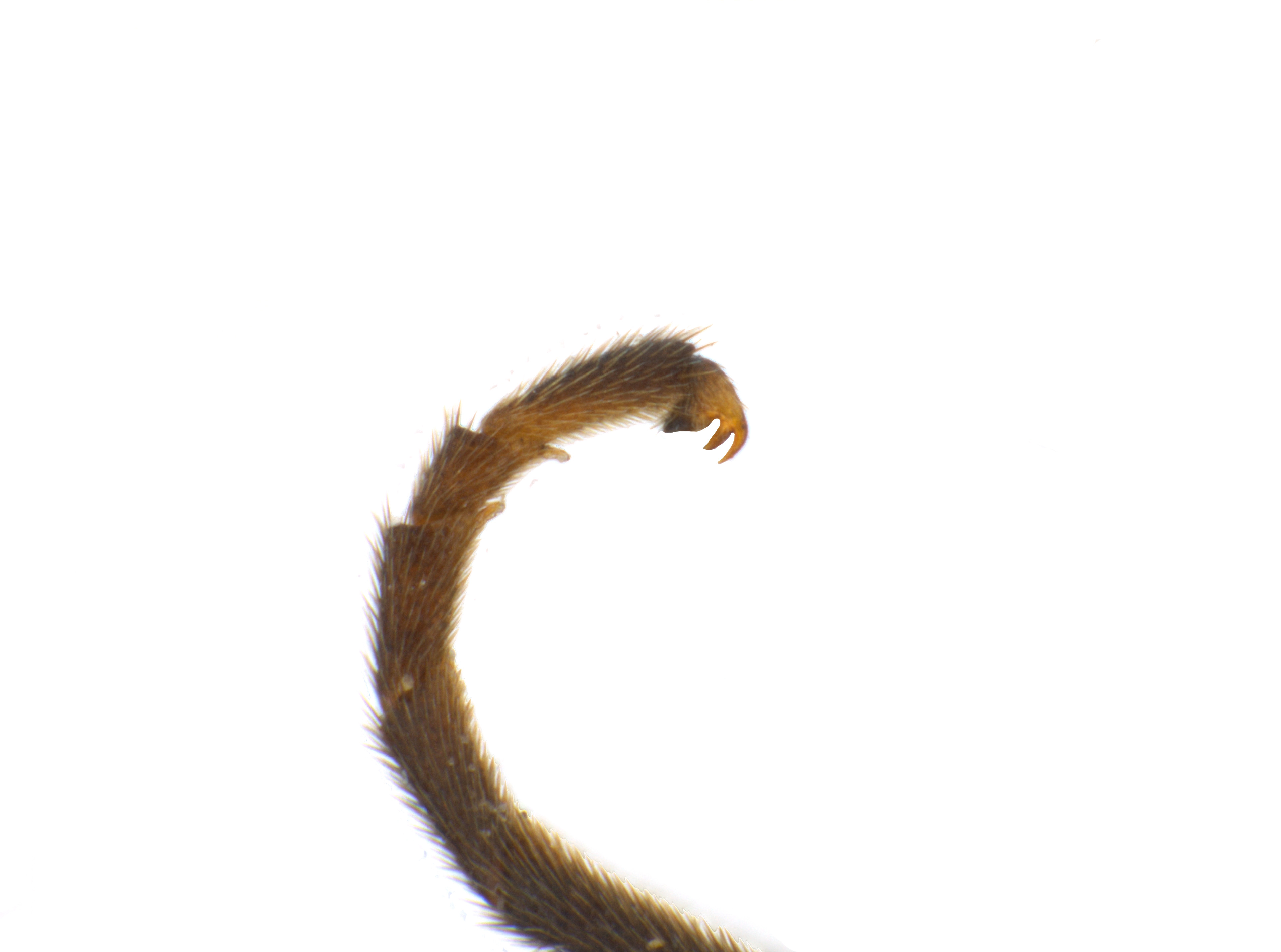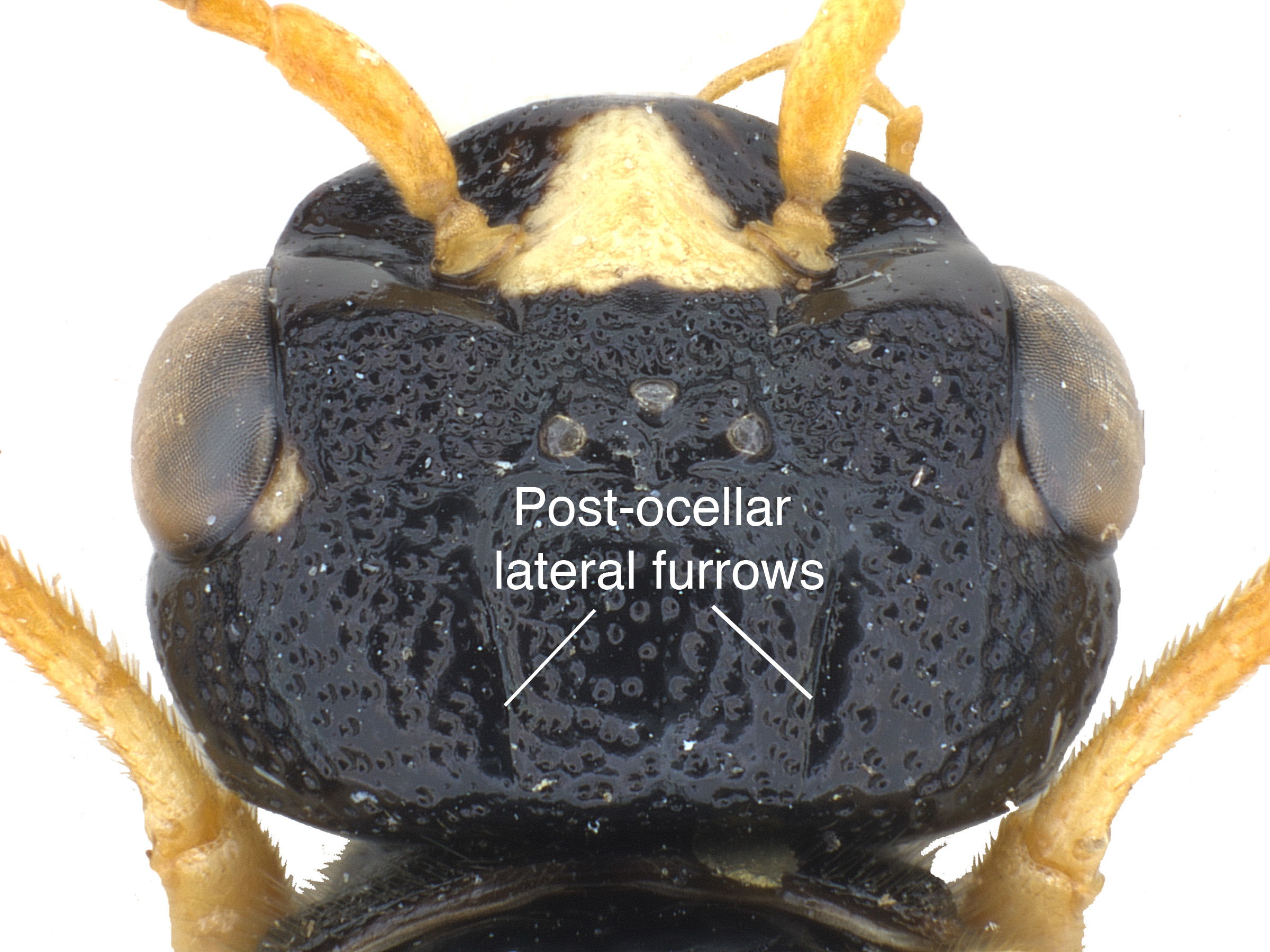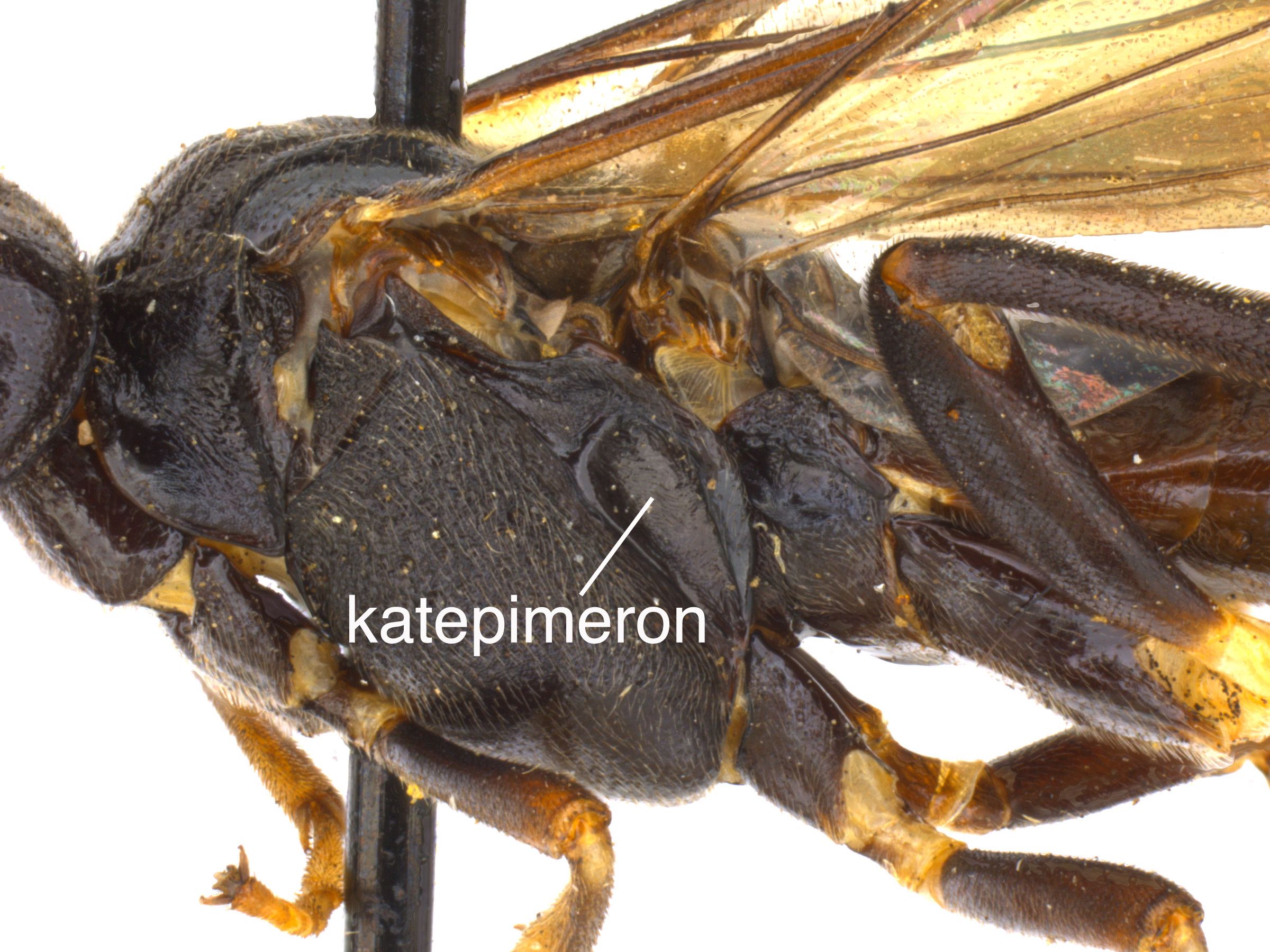Family: Tenthredinidae
Family common name: common sawflies
Subfamily: Blennocampinae
Tribe: Blennocampini
Genus: Claremontia Rohwer, 1909
Subgenera: none
The Tenthredinidae are the most species-rich family and are found throughout the world, in all continents but Antarctica. They are known as the “common sawflies.” They can generally be recognized by a cylindrical body and long, segmented antennaeantenna:
the sensory organ emerging from the front of the head, usually between the compound eyes and above the clypeus; includes the flagellum, scape and pedicel
 . Otherwise, they come in a variety of colors, sizes, and forms (Goulet 1992Goulet 1992:
. Otherwise, they come in a variety of colors, sizes, and forms (Goulet 1992Goulet 1992:
Goulet H. 1992. The genera and subgenera of the sawflies of Canada and Alaska: Hymenoptera. Symphyta. The insects and arachnids of Canada. Part 20. Agriculture Canada Publication.).
Sawflies in the subfamily Blennocampinae have a diverse set of life histories and habits. Many species are restricted to subtropical and tropical regions, but the genus is still fairly species-rich in North America. Blennocampinae includes many sawflies that feed on ornamental and forestry crops. This subfamily can be recognized by wing venationvenation:
the network of veins on a wing
and bidentatebidentate:
having two teeth; often used in descrbing mandibles or tarsal claws
 mandibles (Smith 1969dSmith 1969d:
mandibles (Smith 1969dSmith 1969d:
Smith DR. 1969d. Nearctic Sawflies. I. Blennocampinae: Adults and larvae (Hymenoptera: Tenthredinidae). Technical Bulletin, U.S. Department of Agriculture 1397: 1-176.).
Claremontia are small to medium-sized, about 6–7 mm in length, and entirely black, sometimes with light-colored striping present on the legs. The wings are transparent or slightly darkened (Smith 1969dSmith 1969d:
Smith DR. 1969d. Nearctic Sawflies. I. Blennocampinae: Adults and larvae (Hymenoptera: Tenthredinidae). Technical Bulletin, U.S. Department of Agriculture 1397: 1-176.).
There are 17 described extantextant:
in existence; opposite of extinct
species worldwide. Seven species occur in North America (Taeger et al. 2018Taeger et al. 2018:
Taeger A, Liston AD, Prous M, Groll EK, Gehroldt T, and Blank SM. 2018. ECatSymmdash;Electronic World Catalog of Symphyta (Insecta, Hymenoptera). Program version 5.0 (19 Dec 2018), data version 40 (23 Sep 2018). Senckenberg Deutsches Entomologisches Institut (SDEI), Muuml;ncheberg. https://sdei.de/ecatsym/ Accessed: 28 Jan 2020.).
The monograph for Blennocampinae (Smith 1969dSmith 1969d:
Smith DR. 1969d. Nearctic Sawflies. I. Blennocampinae: Adults and larvae (Hymenoptera: Tenthredinidae). Technical Bulletin, U.S. Department of Agriculture 1397: 1-176.) synonymizes Monophadnoides and Claremontia. The two genera have since been separated, and the only NearcticNearctic:
describing the region of the Northern Hemisphere that includes North America south through northern Mexico
 species to remain in Monophadnoides is M. rubi (Taeger et al. 2010Taeger et al. 2010:
species to remain in Monophadnoides is M. rubi (Taeger et al. 2010Taeger et al. 2010:
Taeger A, Blank SM, and Liston AD. 2010. World Catalog of Symphyta (Hymenoptera). Zootaxa 2580: 1-1064., Smith pers. comm. 2020).
Subfamily characters
 veins Cu1 and 1m-cu between 120°–150° (Goulet 1992Goulet 1992:
veins Cu1 and 1m-cu between 120°–150° (Goulet 1992Goulet 1992: veins M and 1m-cu parallel (Smith 1969dSmith 1969d:
veins M and 1m-cu parallel (Smith 1969dSmith 1969d: veins 2A and 3A incomplete (Smith 1969dSmith 1969d:
veins 2A and 3A incomplete (Smith 1969dSmith 1969d:Genus characters
 about as wide as long (Smith 1969dSmith 1969d:
about as wide as long (Smith 1969dSmith 1969d: present (Smith 2015Smith 2015:
present (Smith 2015Smith 2015: M and Rs+M meeting or slightly basalbasal:
M and Rs+M meeting or slightly basalbasal: veins 2A and 3A straight at apexapex:
veins 2A and 3A straight at apexapex: inner tooth long (Goulet 1992Goulet 1992:
inner tooth long (Goulet 1992Goulet 1992: with basalbasal:
with basalbasal:Claremontia can be confused with similar species in the subfamily Blennocampinae. It can be distinguished from Periclista by the fore wingfore wing:
the anterior wing of each pair of wings; usually the largest wing of the pair
 veins 2A and 3A and by a lack of membranous area on the anepimeronanepimeron:
veins 2A and 3A and by a lack of membranous area on the anepimeronanepimeron:
the dorsal protion of the mesepimeron
 , from Monophadnus by the lack of a divide on the katepimeronkatepimeron:
, from Monophadnus by the lack of a divide on the katepimeronkatepimeron:
ventral section of the mesepimeron
 , and from Monophadnoides by the relative length of the third and fourth antennal segments and the presence of a tarsal clawtarsal claw:
, and from Monophadnoides by the relative length of the third and fourth antennal segments and the presence of a tarsal clawtarsal claw:
sharpened appendage emerging from the apex of the tarsus
 basalbasal:
basalbasal:
towards the base; closest to the body
lobe (Smith 1969dSmith 1969d:
Smith DR. 1969d. Nearctic Sawflies. I. Blennocampinae: Adults and larvae (Hymenoptera: Tenthredinidae). Technical Bulletin, U.S. Department of Agriculture 1397: 1-176.). Claremontia is also characterized by a postocularpostocular:
describes area behind the compound eye
furrowfurrow:
a groove or linear depression
 which is not present in Monophadnoides (Smith 2015Smith 2015:
which is not present in Monophadnoides (Smith 2015Smith 2015:
Smith DR. 2015. A new Monophadnoides Ashmead (Hymenoptera: Tenthredinidae) from Eastern North America and notes on other species. Proceedings of the Entomological Society of Washington 117(4): 499-507.).
none
unknown
unknown
World: This genus is found in North America, central and eastern Europe, and east through Siberia into Mongolia. One species, C. sinobirmana, occurs in Myanmar (Koch 1988aKoch 1988a:
Koch F. 1988a. Die gattung Claremontia Rohwer (Hymenoptera, Tenthredinidae). Deutsche Entomologische Zeitschrift, Neue Folge 35 (4-5): 311-330.).
North America: Species of Claremontia occur throughout the northern United States with some extensions farther south in California, and through southern Canada extending north to Alaska (Smith 1969dSmith 1969d:
Smith DR. 1969d. Nearctic Sawflies. I. Blennocampinae: Adults and larvae (Hymenoptera: Tenthredinidae). Technical Bulletin, U.S. Department of Agriculture 1397: 1-176., Koch 1988aKoch 1988a:
Koch F. 1988a. Die gattung Claremontia Rohwer (Hymenoptera, Tenthredinidae). Deutsche Entomologische Zeitschrift, Neue Folge 35 (4-5): 311-330.).
Map data from: GBIF.org (29 October 2019) GBIF Occurrence Download Claremontia and the Smithsonian National Museum of Natural History Entomology Collection (USNM)
Details about data used for maps can be found here.